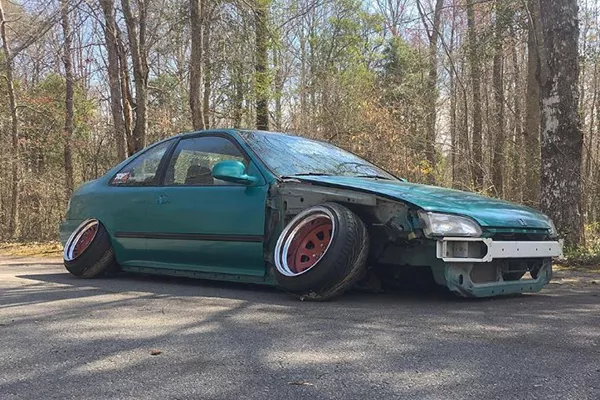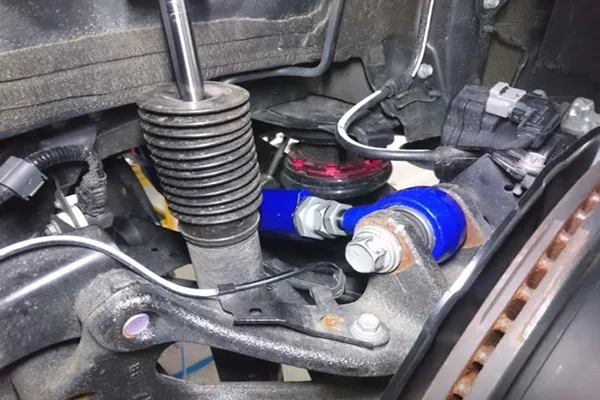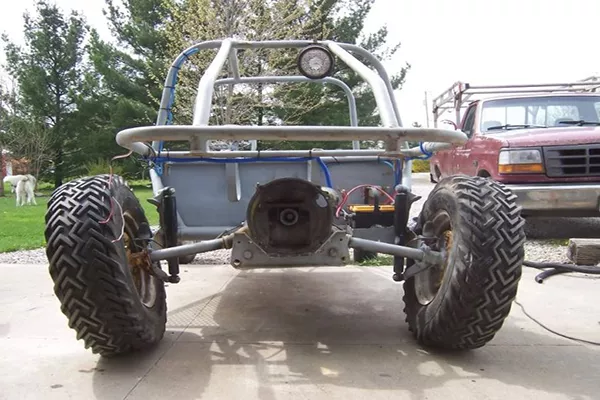Now, as a would-be or current car enthusiast, you guys might have already heard of the word “camber.” You might have seen cars with very prominently aggressive positive camber setups and might have even mingled with those aficionados of what the car world calls stance culture.
Are you puzzled already? That’s okay. We’re here to talk about it and what it really means for your vehicle.
Before we go about how camber angle affects your vehicle’s handling, let Philkotse.com define it and what other terms associated with it mean.
1. Cambering a car: What does it mean?
Camber or more technically, camber angle, is the angle made by both wheels of your vehicle. It refers to the angle made by the vertical axis of the wheels when you look at it from the rear or from the front of your car.
Now, if your car’s wheel is perfectly flat or perpendicular to the ground, its camber would be 0 degrees. Camber would then be called a negative when the top of your car’s tires are angled inwards your wheel well and nearer to your fender wells.
Inversely if the top of your tire is tilted away from your car, your camber would then be called positive. So in short, if the top of the tires angled towards the car is negative camber while angled away from the car is positive camber.
How to Get WORLD'S Craziest CAMBER! (INSANE STANCE)
2. Negative Camber: Pros and Cons
Negative camber: Pros
Now as we’ve said earlier, some folks out there, especially younger dudes, like to adjust their wheels to have a negative camber. This provides increased grip while cornering or drifting while looking nice.
Cars with a negative camber will take corners better because it maximizes the contact patch area. However, this is only effective for the outer tires during a turn and, in reality, the opposite would be true for your inner pair of tires when taking a corner.
For this reason, cars that are used to compete in drifting events and autocross will definitely have a negative camber adjusted almost to a T in conjunction with their suspension designs and real-life factors like flex, elasticity, etc.

Drift cars take huge advantages from negative camber due to how drifting works
If you want to boost up your car to get maximum performance in a straight line, the best way to improve your acceleration is by having the most traction provided by a car with zero camber angle with the tire flat on the road.

Cars such as the Dodge Demon have zero camber for optimum acceleration and speed for drag racing
Negative camber: Cons
Other folks take negative camber to the extreme, combining it with lowering kits resulting in a nearly undrivable vehicle. Severe negative camber will result in “camber thrust.”
This is when tires, due to how they’re angled, will “push” at each other. This will become dangerous especially on uneven driving surfaces because when one loses grip the other will no longer have an opposite counter force acting on it, resulting in a loss of traction.
Tire wear will also be more biased towards the inner side of the tire.

How much negative camber do you really need bro?
How to camber a car: Adjustability
If your vehicle has a double-wishbone suspension, you can typically adjust your camber angle. If you have a MacPherson strut however, it is usually fixed and there’s nothing you can do about it. However, the inability to adjust camber in itself will ultimately reduce wear and tear and maintenance required for your vehicle.
If you’re still set on doing it, you can use a lowering kit. With that, your camber angle will definitely change towards the negative.
Now if you really want to adjust your camber angle you’d have to also modify your suspension to make the upper control arm and strut mounting points to be able to move relative to your vehicle’s centerline.
There are a lot of aftermarket options out there like plates equipped with slots of strut mounts, camber bolts that allow for adjustability or control arms with adjustable ball joints that can create a negative camber by moving the tires entirely.

A camber kit is useful especially if you can in stock form does not allow for camber adjustment
Be warned though because as we’ve already discussed, adjusting your camber will lead to more wear and tear for your suspension and especially your tires. Also, you might want to consult someone who is used to mod cars for performance before even considering these stuff.
>>> Also check: 7 essential components to tune up your car engine for maximum horsepower & torque
2. Positive Camber
Now in off-road applications, wheels are typically adjusted to have a positive camber. Why? This is because a positive camber angle will definitely help to create lower steering effort.
In addition to easier steering, vehicles with positive camber will be more stable as the tires pull to each side. As such vehicles like some dump trucks and cement trucks use this configuration to compensate for their heavy loads. In a more recreational vehicle, stability is often needed when tackling rocky, sandy, uneven terrain.

Stability is desired by many from their off-road vehicle
3. Cambering a car: Conclusion
Now adjusting your vehicle to your particular want or need can be fun. However, if you’re thinking about having your vehicle’s camber adjusted, be sure to always refer to a mechanic, your vehicle’s manual, or better yet another more experienced car guy before even considering it.
Be aware that if you don’t do this correctly you can end up either breaking your vehicle or, worse, be involved in a crash. As with many things we do to mod our beloved vehicles, understand first why you want to do it in the first place.
This is especially true with adjusting camber angles because these involve the primary contact of your vehicle to the ground, not to mention your suspension -- both very crucial to the way your vehicle handles.
>>> Click to get more helpful tips and advice for all car owners
Recent posts
- Modifying your car's exhaust systems: Which type to choose? Feb 08, 2021
- Can ECU remapping damage your car's engine? Nov 30, 2022
- 5 Pros and Cons to consider before having an off-road modification Feb 12, 2019
- Stock vs. Modified - What's the Difference? Aug 16, 2022
- Car tuning for improved performance: Yay or Nay? Dec 31, 2020












